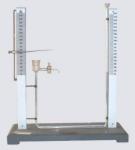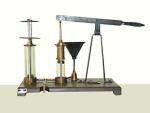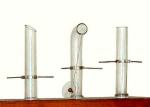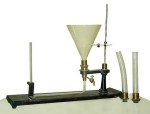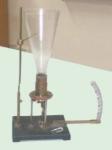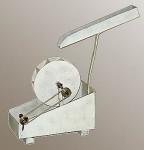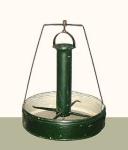- Piezometer
- Apparatus for the propagation of the pressure in liquids and gases
- Communicating vessels
- U shaped tube for liquids of different gravity
-
Hydraulic press
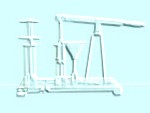
- Apparatus for demonstrating vertical thrust upward
- Double cylinder for the Archimedean principle
- Apparatus for the study of the pressure according to the depth
- Haldat's apparatus
- Pellat's apparatus
- Cartesian diver (or devil)
- Hydraulic wheel
- Hydraulic whirl
- Mechanics
- Summary

 Menu
Menu


